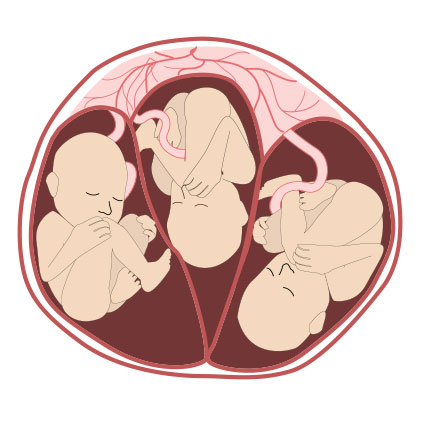
Fetal Reduction
Fetal Reduction
Selective reduction is the practice of reducing the number of fetuses in a multiple pregnancy, say quadruplets, to a twin or singleton pregnancy. The procedure is also called multifetal pregnancy reduction. The procedure is most commonly done to reduce the number of fetuses in a multiple pregnancy to a safe number, when the multiple pregnancy is the result of use of assisted reproductive technology; outcomes for both the mother and the babies are generally worse, the higher the number of fetuses.
The procedure is also used in multiple pregnancies when one of the fetuses has a serious and incurable disease, or in the case where one of the fetuses is outside the uterus, in which case it is called selective termination.
The procedure generally takes two days; the first day for testing in order to select which fetuses to reduce, and the second day for the procedure itself, in which potassium chloride is injected into the heart of each selected fetus under the guidance of ultrasound imaging.
Risks of the procedure include bleeding requiring transfusion, rupture of the uterus, retained placenta, infection, a miscarriage, and prelabor rupture of membranes. Each of these appears to be rare.
Selective reduction was developed in the mid-1980s, as people in the field of assisted reproductive technology became aware of the risks that multiple pregnancies carried for the mother and for the fetuses.
